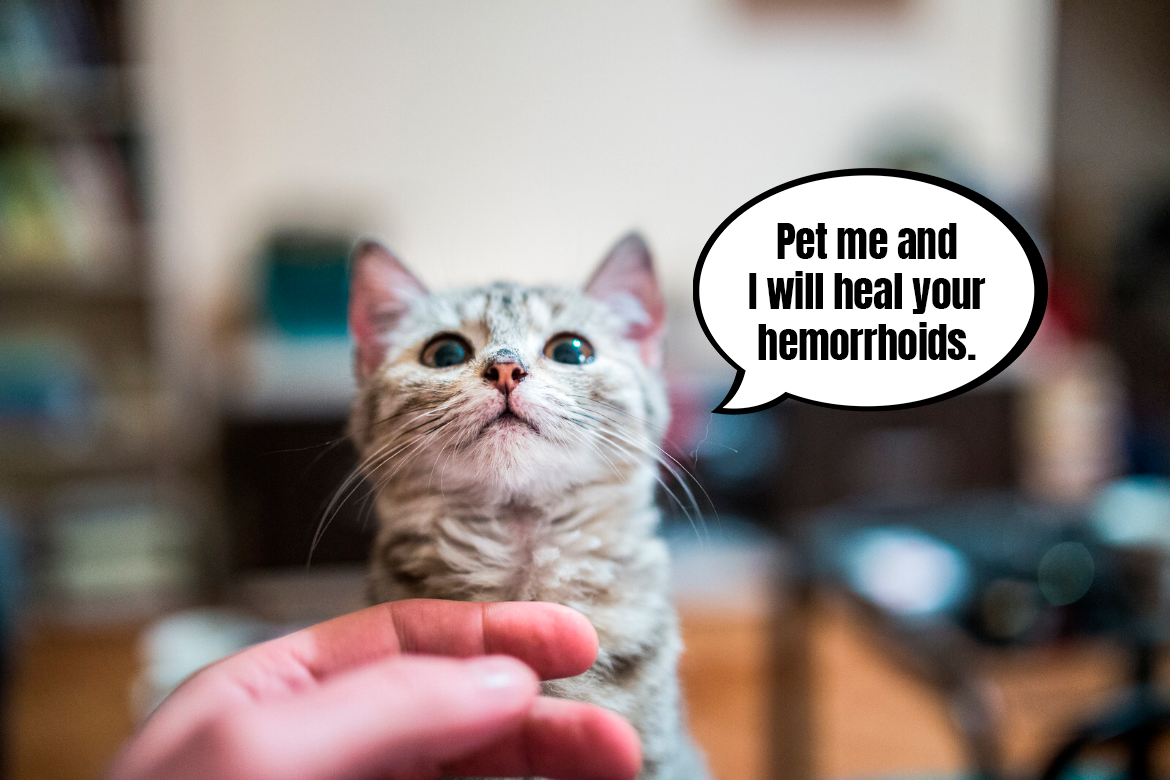Do you remember the memes with cats pouring out of a medicine vial as a prescription for happiness? Our experts are purring that there’s a lot of truth to that! If we found a vial big enough, every cat would try to fit inside – it’s a fact we can’t argue. However, the story has another depth to it. Did you know that cats can work as therapists? Getting better with a cat on your side starts to sound like a fabCat dream. What exactly is feline therapy and who can be a cat-therapist’s patient? Today we’re checking it out just for you!
What is this mysterious feline therapy?
Working with cats is a part of a bigger field called animal therapy or zootherapy. The main foundations here are simple and, from the fabCat’s perspective, definitely attractive – patients get to interact with animals as a part of their therapy sessions and the animals allow them to relax, calm down, learn patience, responsibility and get physically and mentally stimulated. The type of animal therapy is chosen accordingly to the patient’s needs and the possibilities that particular animals give them as therapists – dog therapy or equine therapy (working with horses) give completely different results than therapy with cats or dolphins.
Cats are natural-born good mood boosters. All the times that we are looking through our Instagram and your fabCat photos of your fluffy companions, our moods get instantly better. It works even stronger when you can actually interact with cats in real life – whether it’s our own cats or ones that we meet in cat cafes, at friend’s houses or perched on the wall around a neighbour’s house when we’re wandering the neighborhood. Cats’ purring also has some therapeutic benefits – studies show that it’s great for lowering blood pressure and cholesterol levels.
Cat therapy in practice
Patients that can benefit from cat therapy are, among others, hospice and retirement home patients, kids in foster homes, autistic people, people with disabilities, people suffering from depression and neurosis, patients from rehabilitation centers, people with high blood pressure and cardiovascular diseases, as well as kids at pre-school and schools. During feline therapy sessions, beside the cat and the patient there’s also the cat’s Guardian who, thanks to proper qualifications and knowledge, guides the therapy and is able to use the animal’s abilities in the best way.
An important aspect of feline therapy is that the pleasure from the interaction is mutual – both the patient and the cat are happy to be there. Because of that, it’s important that the patient learns how to properly behave around the purring therapist – they need to get to know the cat’s preferences, understand how to softly pet them, how to recognise different signals, how to play and give treats etc. Single therapy sessions with the pets don’t need to be long or intense – it’s the interaction with the animal itself that brings positive results to the table, especially if it happens regularly and focuses on good energy for everyone involved.
Cat therapy magic – what effects does it have?
Many studies done around working with cats show that therapy with feline companions can calm people down and ease them into building relationships with other beings and humans. This fact is used i.a. when working with autistic people or people with social anxiety. Cats are often perceived as individualists, but ones that are fit for working as cat therapists are actually great in social situations and can have a positive effect on people who suffer from loneliness. A cat’s company, even if it’s for a short while (e.g. during visits in retirement homes) give the people some sense of closeness, allows to build relationships and gives them something to wait for during the next meeting. If the cat is in their presence for longer, taking care of a pet helps with rebuilding your goals, feeling responsible for other beings and overall boosts the general feeling of being happy with your life.
The wonderful capabilities of cats during therapy are not limited solely to the company of a soft, furry being. By nature, cats are very understanding, never judge people, are calm and are generally soothing. Even us, looking at our boys sometimes after an intense day of work, we feel some sort of relief and inner peace – their neverending chillout and the ability to make us laugh out of nowhere is truly infectious! 🙂
Not all cats can become therapists
Cat therapists are working cats. By taking on the role of a being, capable of soothing nerves, building a sense of responsibility and having goals or positively affecting our mental and physical health, cats that are used in feline therapy have to have an aptitude for it. It’s just like with doctors and their sense of calling – in the feline world there are cats who feel more or less inclined and motivated to build up their careers as cat therapists.
If a cat is supposed to work in feline therapy, the key aspects are their personality and their bond with the Carer who supervises and coordinates their work on every step of cat-patient interaction. A good cat therapist is the typical cuddly type, full of love for hoomans, lap-naps and petting. The title of feline therapy meowster can also go to the cats who are happy and playful or, if it’s the elders they will be working with, patient, calm and well-behaved. It’s always important that their behavior is predictable and that cat therapists love the company of people, strangers included, with pawsitive attitude and zero aggression.
Even if not all cats are meant to be professional cat therapists, in a home environment they will always stay a great support system for their Guardians. What does it look like in your homes, fabCats? Are you able to imagine your fluffy companions taking on the role of feline therapists? Or maybe you know someone who had the opportunity to be a patient in feline therapy? We invite you into the comments section for an open discussion.




